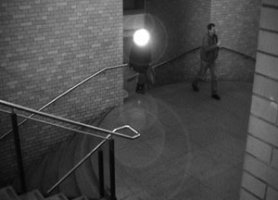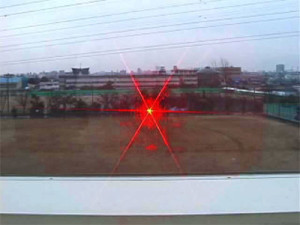Privacy is getting to be an expensive commodity these days, and it’s about to get even worse. As security professionals, we here at SB know all about the benefits of security cameras and logs, activity monitoring and event still imaging (i.e. cameras that will take a single image every time a door opens), but we also know that there are definite benefits to knowing when it’s prudent to hide from surveillance, and how to do just that. So we thought we’d let you in on the secrets too.
Hiding from cameras – how?

Hiding from cameras has become more of a hassle than it used to be. Most cameras are hard to see, they’ve got low light capabilities and even IR capabilities, they’re PTZ-cameras, perhaps (that stands for Pan-Tilt-Zoom), and there’s someone controlling them from afar, just to get a shot of you.
In any given city, on any given day, you’ve almost certainly been caught on camera several times, and your face and visit will be on record for anything from a week to several months, depending on the capabilities and licenses the owner of the camera has. So how can you hide from cameras?
The short answer is that you can’t. If you want to live in a modern society, you’re going to have to put up with being glimpsed by a camera now and then, but there are certainly steps you can take to minimize the number of times someone gets your mug in their shot, so to speak.
– Plan ahead.
The first thing to do is get to know your surroundings. If you’ve got a daily route to/from work or whatnot else you might do, find out where the cameras are. The same goes for your local bank, grocery store, library, and so on. Find out where the police or DHS has cameras out on the street, too – they’re there, we guarantee it. Now that you know where the majority of your daily camera encounters are, you can avoid those places. Or be extra stealthy when you pass on by, at least.
[box type=”red”]FYI: Avoiding surveillance measures is LEGAL. However, some of the methods we’re going to describe might seem suspicious to law enforcement and/or security personnel. Stay safe, and stay vigilant.[/box]
The cameras you should prioritize if you want to avoid being caught on tape are those placed near eye level. The ones hanging from the ceiling or a street light aren’t much to worry about – we’ll deal with those later. So where are there eye-level cameras? ATM’s have cameras that usually catch more than just the person standing in front of them. Newer model intercoms often have cameras, so the person on the inside can see who’s ringing the door bell. It’s not hard to hook those up to DVR. Vehicles with dash-cams will also be looking you straight in the face, and those are usually cop cars… unless you’re Russian. Then it’s just about anyone.
Planning ahead won’t save you from the dash-cams, of course, but it might minimize your appearance on bank cameras, at least. That’s a step in the right direction.
– Choosing your direction.

There are several paths you can take in order to get together a viable defense against surveillance in your everyday life. Some people choose to go for pure avoidance – mapping out where their local cameras are, and even go so far as to research these things before venturing out of their comfort zone. It’s a painstaking way to do things, and it’s certainly only for the most dedicated.
The second way of avoiding everyday surveillance is to employ countermeasures, and that’s what we’re going to focus on. Using countermeasures allows you to worry less about where the cameras are, and in turn where you decide to go. Also, again, you should be aware that doing some of the things we’re about to suggest will make you look medium to very suspicious in the eyes of surveillance operators, which might get you into minor trouble, at times. Remember that avoiding surveillance is legal in every jurisdiction we’ve looked into, since there’s no obligation to show your face on camera when out in public. However, if you’re ever approached on restricted locations and asked to identify yourself, you should do so immediately.
Surveillance Countermeasures
Cameras are the main tool for everyday surveillance. So, beating cameras will be our biggest challenge when trying to avoid surveillance wherever we go, and to do that, we need to understand a couple of things about how cameras work, and what they can and cannot do. Here’re some quick facts;
– Modern CCTV cameras can positively see in the dark. Most are low light capable, and some can use IR illumination.
– CCTV cameras are not the same as a regular camera. Their acceptance of IR light is much higher, which makes them both very useful in low light, but makes them vulnerable – we’ll get back to how.
– Modern CCTV cameras come in hundreds of models, but most are capable of HD viewing, and recording.
– CCTV cameras come in two basic models; regular cameras, and “domes“. Domes are often PTZ cameras, and sabotage resistant.
– All cameras have narrow fields of view, unlike the human eye. A too wide angle on a CCTV camera will distort the image beyond what is usable.
The challenge is to find ways of exploiting the vulnerabilities of the CCTV cameras, and do it in a way that won’t get us arrested. But that’s the fun part, right?
Field of vision / field of view
Most modern CCTV cameras have the option to adjust this manually, and many have the option for this to be adjusted remotely. The problem with wide angle cameras is that the image gets distorted – take a look at a fish-eye view image, and you’ll see why a wide angle lens quickly can become useless in a security setting.
Avoiding a CCTV camera’s field of view is pretty easy. Staying to the side of it, or under it is your best best bet. If you have to pass one, stay to its side, or as close to the wall it’s mounted to as you can. There’s no guarantee that this will work, of course, but if you have no other means of staying off camera, go with this.
Naturally, only a few of us ever see the images any given camera will generate, but logic will tell you a lot. What’s close that would be interesting to the security staff? Is there a door or a garage gate nearby? A fence opening, with or without a gate, a main entrance or a main back door would also be very interesting. Usually, cameras will be focused on one single object or area, unless the camera is a police camera, which might have been installed to keep a watch on a larger area.
Playing with angles
Any camera that is mounted above your head is easy to thwart if you want to. Stay at the most extreme angle against the camera as you can, and use something to shield your face. This doesn’t mean you should wear a ski mask or anything of the sort – in fact, your face may be completely visible. However, you should obscure the view from above. Using a ball cap or a hoodie will do the trick nicely, as long as the ball cap is on the right way, and/or the hoodie is worn with the hood on, and pulled as far “forward” as possible.
Looking down will also provide a too extreme angle for the camera to catch a glimpse of you. There’s no need to glue your eyes to the floor, but tilt your face a little downwards.
Technical countermeasures

The most effective way of avoiding surveillance would be to sabotage every camera that we come into contact with. That’s neither legal nor very cost or time effective, however, so we’re going to try some other solutions to this conundrum.
All cameras register light, obviously, and those who are IR or low light enabled will “see” light better than others. That’s also why we can “flood” them, without using much light at all. There’s also a couple of tricks we can use to induce lens flare and “blooming”, something you may have seen when taking pictures where the sun is visible, for example.
In low light, the most effective way to stay off camera is to “mask” yourself using IR LEDs. These will flood any IR capable camera around, and it’s severely cost effective, since making a hat or cap equipped with IR LEDs will run you somewhere from 20 – 50 bucks. IR LEDs are cheap these days, and you’ve probably got the needed wiring right in your home, in old computer equipment, for example. There are several guides out there on how to make your very own LED mask, so we won’t go into detail in an already long page, but we may come back to that later…
Another, more complicated and costly way of remotely disabling a CCTV camera is laser light. Laser light is severely destructive if it’s powerful enough, but a low power laser will still suffice if you’re simply looking for a short term blinding of a single camera. Aiming a laser of any color (RGB) at a camera will create sever blooming or flare, and might even damage the CCD chip, causing permanent damage. In this regard, a camera will be the same as a human eye – aiming a laser at it will temporarily blind, while high powered devices will damage it permanently, even from very long distances. There are a lot of examples on how to use lasersagainst cameras out there, so we won’t go into too much detail about that either. Not right here, at least.

There are a couple of drawbacks to using lasers compared to IR, however. Using IR, you can blind several cameras at once, without any need for aiming. A laser must be aimed directly at a camera, and will only be useful against a single camera at a time. The greater the distance, the more difficult the aiming becomes, not to mention maintaining it. Also, using lasers in public might bring other problems with it, especially if you’re not careful to keep the laser beam away from people and property, air traffic and road traffic, etc.
Jamming devices
Wireless cameras. They’re all the rage these days, since range and dependability, security and cost have all become more and more favorable. The drawback is that using the right equipment, the cameras can be “jammed” – that is, the transfer of information from the cameras can be interfered with. We’re not going to go into that, since most jamming technology is heavily restricted, and even illegal in many jurisdictions, especially if you don’t have the right licenses for it. Also, since the technology only works on wireless cameras, it’s hardly a viable option in any scenario.
Shopping examples:
IR Mask:
– 50 pcs IR LEDs, 60 degrees, 940nm
– Wool cap for mounting (you can use other apparel too)
– Wiring harness with switches
– Batteries (remember to match voltage!)
Lasers:
– 450nm Blue Laser (true blue, hard to filter out)
– 532nm Green Laser
– 635nm Red Laser

I was wondering if you ever thought of changing the structure
of your website? Its very well written; I love what youve got to say.
But maybe you could a little more in the way of content so people could connect with it better.
Youve got an awful lot of text for only having one or 2 images.
Maybe you could space it out better?
hi, whats the best cell phone jammer for 4g htc inspire cell phones, and do they work